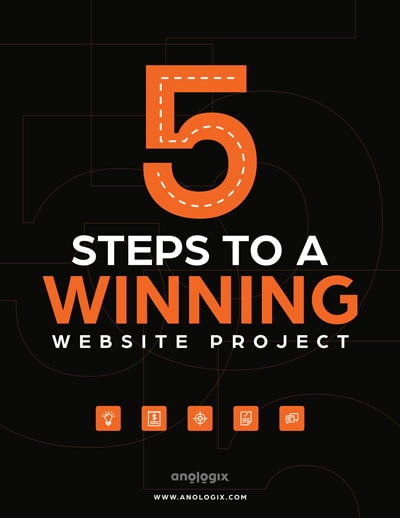
What Elements Does Your Small Business Website Need to Be Successful?

Even if your business is small, it's crucial to have a website in today's world - even if you only serve a local customer base. In this article, we'll be going over nine elements every small business needs.
What is the purpose of your website?
Before we go into the essential elements of your small business website, we should look at the purposes your website serves. Here are a few things a website can do for your business:
- Get more traffic - your website needs to be optimized for search engines so you can be found online.
- Gain your visitors' trust - once a person comes to your website, you need to make sure it's functioning the way they need and expect it to.
- Teach - your website should be educating people on what their problems are, then informing them on how you can solve these problems.
- Help customers - People will most likely need to come back to your website numerous times before making a purchase. To help them along, you should capture their email address and create valuable content that is relevant to them and where they are in their customer journey.
- Convert - Depending on your business, your goal could be anywhere from converting visitors to newsletter subscribers, asking them to call you, or make a purchase on your website. Make sure you design your homepage with conversion opportunities that help guide people through their journey.
- Tell a story - Your website should be telling a story to your audience, but it shouldn't necessarily be a story about you. Your audience needs to see themselves in your story - they need to learn about how you can solve the problems and challenges they're struggling with.
Essential Website Elements
Now that you know more about what a website can do for your small business, let's talk about some elements you need to make it successful:
1. Basic Business Information
If people want to reach out to you, you need to make sure it's easy for them to do it. Some people will come to your website specifically to find your phone number, address, or business hours. Make sure this information is easy to find, whether they are on a desktop or mobile device, and have contact forms in multiple locations.
One suggestion is putting your phone number in the top right corner on the homepage. The phone number should be large, easy to read, and clickable. Click-to-call phone numbers allow people who are viewing your website on their mobile device to call you by simply tapping on the phone number.
Your business address can be included in both the footer and contact page. While the address does not need to be large, it should still be easy for visitors to find.
If for whatever reason, you don't want your address displayed (like if you're running your business from home), it's ok to leave it off. You'll still want to let your visitors and search engines know which areas you serve, though.
2. A Great Home Page
The homepage is the first impression visitors get when coming to your website, so you'll want to make sure it clearly communicates your brand image with appealing visuals and copy. You'll also want to answer:
- What does your business do?
- Who does your business serve?
- Why does your business exist?
- Why should a customer care?
There many creative directions you can take with your homepage, but it should, at the very least, include a navigation menu, your logo, and a brief description of your business.
More and more people are using their smartphones to check the web and make purchases, so your website also needs to have responsive design features that allow it to be easily navigated, whether it's on a desktop or mobile device.
3. Access to customer service
While your website offers plenty of marketing benefits, there are still going to be times when customers want to connect with another human. On your website, you need to give people the option to contact you via phone and email. You can even add a chatbot function to your site as well. Learn more about those here.
4. User-friendly Navigation Menu
Your navigation menu should expand across the top of your website or in a sidebar, and should be easily located by your site visitors. You'll want your navigation menu to include logical categories so that people can quickly find what they're looking for. One of the main reasons people leave a website they've visited is due to poor navigation.
You'll want to plan out the best structure for your navigation menu based on your small business. Determine your categories and subcategories by looking at:
- What types of items and services you sell
- What those products and services cost
- Where your business is located
- Your hours of operation
- How customers will purchase products and services
Your navigation should use sequencing and titles that help visitors quickly and easily identify what part of your website they want to visit.
5. Search Function
In addition to your navigation menu, you can make it easier for customers to find what they're looking for by adding a search box feature (if applicable). This is where they can type in keywords or phrases to find the information they need if the navigation menu falls short.
When visitors type something into the search box, they'll be shown relevant pages to visit, so they don't have to search manually.
6. FAQ Page
As you engage with your customers, you'll start to see patterns in the types of information they're looking for, and the questions that arise regarding your products or services. By offering a Frequently Asked Questions page with these questions and answers, you'll make it easier for customers to find the detailed information they need to help make a decision.
7. Quality Images
People love pictures. Images are a great way to showcase your products, services, experiences, projects, and more. The best images will communicate feelings, showcase your brand, and give good impressions. When putting photos on your website, consider these things:
- Stock Images. While these images tend to be high-quality and professional, they are also generic and impersonal. They won't connect to your audience the same way a custom image would.
- Custom Images. These images are personal and detailed. However, it can be expensive and time-consuming to hire a photographer.
If you can't hire a photographer, try taking the photos yourself! Here are some tips for getting a good picture:
- Make sure there is plenty of natural light. Dark images can be hard to see and understand.
- Make sure the picture is sharp. You'll want to use a newer cellphone or camera to take pictures. Images taken with older phones tend to look grainy on bigger screens.
- Keep your pictures as clean and uncluttered as possible. Take a look at what is in the background and to the sides of your photos and clear out anything unnecessary.
If you can't get a good custom image, stock photos are still a great, high-quality option.
8. An Enticing Call to Action
Whether your goal is to make sales or gather subscribers, you need a call to action. With CTAs, you can invite people to fill out a contact form, sign up for a newsletter, book an appointment, request an estimate, give you a call, and so much more.
One of the best ways to do this is to make contact forms, phone numbers, and your address easy to find on every page. You can also create buttons that your visitors can interact with. To learn more about creating enticing CTAs, check out this blog!
9. Build Trust with Testimonials
In order to make more sales, you need visitors to convert to customers, and to do that you need to gain their trust. Why should someone buy from you if they've never heard of you before? Give them proof of how your products or services have solved other people's problems.
If you have reviews you want your audience to see, add them to your home page and/or create a testimonials page. Testimonials from other customers are a powerful marketing tool and a very effective selling mechanism.
Takeaway
Having a website is an effective and affordable way to expand your online presence and grow your business - all you need are a few essential elements to make a positive impression on your audience. If you're looking to create a website for your small business, check out this blog for pitfalls you'll want to avoid. We hope you have found this article helpful, and if you need help incorporating these elements into your website, feel free to reach out to us at AnoLogix!
FREE Guide
Get 5 Steps to a Winning Website e-Book
